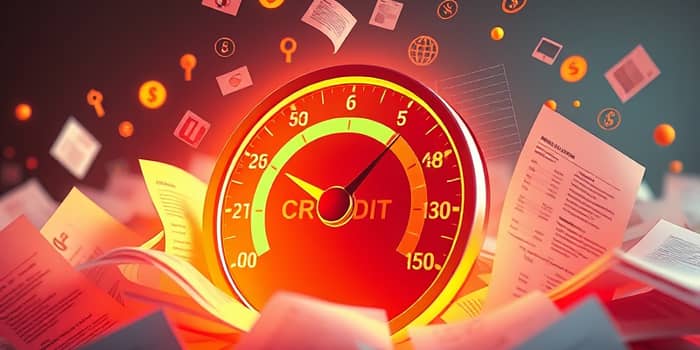The journey towards financial stability is paved with decisions that affect our credit profile and borrowing options. In this article, we unpack the dynamic interplay between credit scores and loans, illustrating how each influences the other in profound ways.
What is a Credit Score?
A credit score is a three-digit measure of creditworthiness that lenders use to gauge the level of risk in extending credit. It reflects payment history, debt levels, credit age, account diversity, and recent inquiries. By condensing complex financial behavior into a single number, a credit score offers a quick snapshot of reliability.
Scores typically span from 300 to 850, with five broad categories that signal distinct levels of trust:
Why Lenders Rely on Credit Scores
Lenders face the constant challenge of balancing opportunity and risk. A standardized measure like a credit score offers a transparent way to compare borrowers. By trusting a numerical scale over anecdotal evidence, institutions can streamline approvals and maintain healthy lending portfolios.
Objective assessment of borrower risk allows banks and credit unions to allocate funds responsibly. This framework promotes fairness and consistency, ensuring that individuals with stronger credit histories gain better access to capital.
How Credit Scores Influence Loan Approval
Loan eligibility is closely tied to credit score thresholds. An applicant with a 'Good' or higher score often encounters more welcoming terms, while someone in the 'Fair' or 'Poor' range may need a co-signer or face outright denial.
Different types of credit have varied minimum score requirements:
- Mortgages often require a minimum of 620 for standard approval.
- Auto loans may accept scores down to 580, but at higher rates.
- Personal loans frequently demand 640 or higher for competitive terms.
- Credit cards span a broad spectrum, from subprime to premium rewards cards.
Meeting or exceeding these benchmarks can be the difference between securing financing for a home, car, or urgent expense, and waiting indefinitely.
The Impact on Interest Rates
Interest rates represent the cost of borrowing, and they vary in relation to perceived risk. Lenders employ risk-based pricing to offset perceived risk to adjust rates, charging higher interest to offset potential defaults among lower-scoring borrowers.
Consider a typical 30-year mortgage on a $250,000 home. A borrower with a score of 760 might secure a rate of 3.2%, while someone at 620 could see 4.5% or more. Over three decades, that half to full percentage point difference can cost tens of thousands of dollars in additional interest.
Auto loans and personal loans follow a similar pattern. On a five-year auto loan of $30,000, a good score might yield a 4% rate, whereas a poor score could exceed 10%. Monthly payments can diverge by over a hundred dollars, stressing household budgets.
Other Loan Terms Shaped by Credit Scores
Beyond rates and approval, credit scores influence the broader terms of lending. Credit scores can determine the amount you can borrow. higher scores may unlock larger amounts, allowing for greater flexibility and purchasing power. Borrowers with weaker scores often face higher down payment requirements or mandatory fees, raising the initial cost of credit. Additionally, a strong profile may grant longer repayment windows with lower monthly payments, while lower scores shrink available options and tighten terms.
Factors Determining Your Credit Score
Understanding the makeup of a credit score empowers strategic improvement. Five primary factors dominate most scoring models:
- Payment history—the most influential element, rewarding on-time payments.
- Credit utilization—the ratio of outstanding balances to available limits.
- Length of credit history—longer histories generally signal stability.
- Credit mix—the diversity between revolving accounts and installment loans.
- New credit actions—recent inquiries and account openings can temporarily lower scores.
Negative events like bankruptcies or collections weigh heavily and can linger for years, underscoring the value of proactive management.
How Loans Influence Your Credit Score
The relationship is reciprocal. Every loan you take has potential long-term impact on your score:
Timely payments build positive history, signaling reliability. By contrast, late or missed payments reflect poorly and can drastically lower your score.
When you apply for new credit, hard inquiries appear on your report and may shave a few points temporarily. Balances on revolving accounts affect utilization ratios, which in turn feed into your score calculation. As installment loans approach zero balance, the account may close, occasionally reducing your average account age but still marking successful repayment.
Strategies to Improve Your Credit Score
Boosting your creditworthiness is a journey, not a sprint. Key strategies include:
- Making every payment by the due date, even if only the minimum amount.
- Reducing credit card balances to keep utilization below thirty percent of limits.
- Avoiding unnecessary credit applications to minimize hard inquiries.
- Maintaining older accounts while responsibly adding new credit types.
- Regularly reviewing your credit report to spot and dispute errors.
Consistency in these habits can elevate your score significantly over a 6–12 month horizon, opening doors to more favorable loans.
Quantifying the Relationship: Savings and Costs
To illustrate the power of a higher score, consider a 100-point increase that moves you from 'Fair' to 'Good'. On a $250,000 mortgage, you might save over $70,000 in interest across 30 years. In the auto market, better scores can shave thousands off total loan charges. Credit cards follow suit, with lower APRs and reduced finance charges.
Tools like online mortgage and auto loan calculators help quantify these differences, making the economic case for deliberate credit improvement.
Conclusion: A Sustained Cycle of Financial Well-Being
The symbiotic relationship between credit scores and loans underscores the importance of informed borrowing. By nurturing a strong credit profile, you unlock access to better rates, larger amounts, and more flexible terms. Responsible use of loans, in turn, bolsters your history and cements long-term financial health.
Every step you take—big or small—contributes to this cycle. From on-time payments to prudent credit management, the journey towards financial empowerment is guided by the interplay of these two crucial elements. Embrace this partnership and let it pave the way to your next opportunity.
References
- https://www.caccu.org/how-does-my-credit-score-affect-getting-a-loan/
- https://www.americanexpress.com/en-us/credit-cards/credit-intel/credit-score-interest-rate/
- https://www.experian.com/blogs/ask-experian/why-do-people-with-higher-credit-scores-get-lower-interest-rates/
- https://themortgagereports.com/87625/mortgage-rates-by-credit-score
- https://columbinefcu.org/unlocking-opportunities-understanding-the-impact-of-credit-scores-on-loan-approvals/
- https://www.nchfa.com/news/home-matters-blog/how-your-credit-score-impacts-your-home-buying-journey
- https://mortgage.sirva.com/mortgage-resources/sirva-mortgage-blog/details/2024/07/11/how-credit-impacts-your-loan-approval
- https://www.myfico.com/credit-education/calculators/loan-savings-calculator










